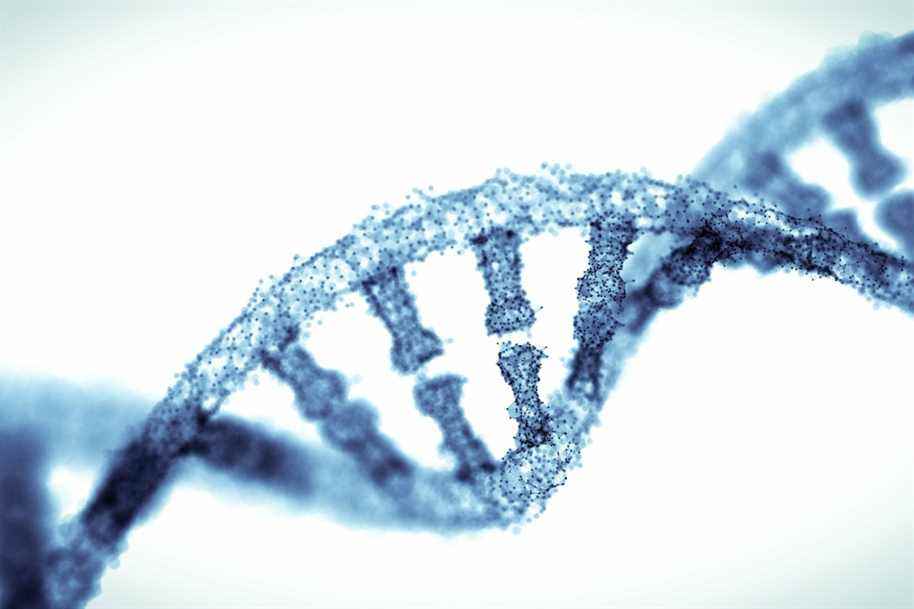(Paris) Two historical texts kept at the National Archives, the Declaration of the Rights of Man and that of the Rights of Women, have been encoded on DNA, thanks to a new technology which promises a more durable and less voluminous storage than the traditional digital one. .
These are two tiny capsules containing synthetic DNA strands, on which were stored the Declaration of the Rights of Man and of the Citizen of 1789 and the Declaration of the Rights of Women and of the Citizen, the latter written by Olympe de Gouges in 1791.
The capsules were deposited on Tuesday in the iron cabinet of the National Archives in Paris, alongside the originals and other emblematic texts such as the 1958 Constitution or Napoleon’s will.
“This is the first time that the Archives de France has kept documents on DNA, and it is a world first for a public institution,” said Bruno Ricard, Director General of the National Archives, during the deposit ceremony. .
The technology consists of transforming binary digital data (the document on paper encoded in a file made up of 0 and 1), into quaternary data: the letters A, T, C and G. These letters are the building blocks of DNA, the support of genetic information which is transmitted from generation to generation, over several tens of thousands of years.
The digital information thus converted is stored on large molecules – like living things – copied billions of times: “this is an innovative bio-inspired strategy”, explains Stéphane Lemaire, CNRS research director, whose team at the origin of the “DNA Drive” project.
The rewritten DNA is then freeze-dried and to read the information, just add a drop of water. We can then recover the file via a DNA sequencer.
Stability is guaranteed for “more than 50,000 years,” says Stéphane Lemaire, recalling that a complete genome of a mammoth over a million years old had been able to be reconstructed. Digital magnetic tape storage, on the other hand, has a short lifespan – data must be transferred every ten years.
The technology is also “energy efficient” and incomparably smaller than the “datasphere”, which brings together all of the world’s digital data.
These, estimated at 45 zettabytes (1021 bytes), are growing exponentially, and “the demand is already greater than the storage supply”, underlines Stéphane Lemaire.
DNA potentially offers “a density so high that we could store all the data in the world in the equivalent of a bar of chocolate,” he says.
But the technology is still limited by its very high cost, around 900 euros per megabyte.

FRANCE-PRESSE AGENCY ARCHIVES PHOTO
The capsules were deposited on Tuesday in the iron cabinet of the National Archives in Paris, alongside the originals and other emblematic texts such as the 1958 Constitution or Napoleon’s will.
DNA encoding makes historic entry into the National Archives
Paris
Two historical texts kept at the National Archives, the Declaration of the Rights of Man and that of the Rights of Women, have been encoded on DNA, thanks to a new technology which promises a more durable and less voluminous storage than the traditional digital one.
These are two tiny capsules containing synthetic DNA strands, on which were stored the Declaration of the Rights of Man and of the Citizen of 1789 and the Declaration of the Rights of Women and of the Citizen, the latter written by Olympe de Gouges in 1791.
The capsules were deposited on Tuesday in the iron cabinet of the National Archives in Paris, alongside the originals and other emblematic texts such as the 1958 Constitution or Napoleon’s will.
“This is the first time that the Archives de France has kept documents on DNA, and it is a world first for a public institution,” said Bruno Ricard, Director General of the National Archives, during the deposit ceremony. .
The technology consists of transforming binary digital data (the document on paper encoded in a file made up of 0 and 1), into quaternary data: the letters A, T, C and G. These letters are the building blocks of DNA, the support of genetic information which is transmitted from generation to generation, over several tens of thousands of years.
The digital information thus converted is stored on large molecules – like living things – copied billions of times: “this is an innovative bio-inspired strategy”, explains Stéphane Lemaire, CNRS research director, whose team at the origin of the “DNA Drive” project.
The rewritten DNA is then freeze-dried and to read the information, just add a drop of water. We can then recover the file via a DNA sequencer.
Stability is guaranteed for “more than 50,000 years,” says Stéphane Lemaire, recalling that a complete genome of a mammoth over a million years old had been able to be reconstructed. Digital magnetic tape storage, on the other hand, has a short lifespan – data must be transferred every ten years.
The technology is also “energy efficient” and incomparably smaller than the “datasphere”, which brings together all of the world’s digital data.
These, estimated at 45 zettabytes (1021 bytes), are growing exponentially, and “the demand is already greater than the storage supply”, underlines Stéphane Lemaire.
DNA potentially offers “a density so high that we could store all the data in the world in the equivalent of a bar of chocolate,” he says.
But the technology is still limited by its very high cost, around 900 euros per megabyte.
